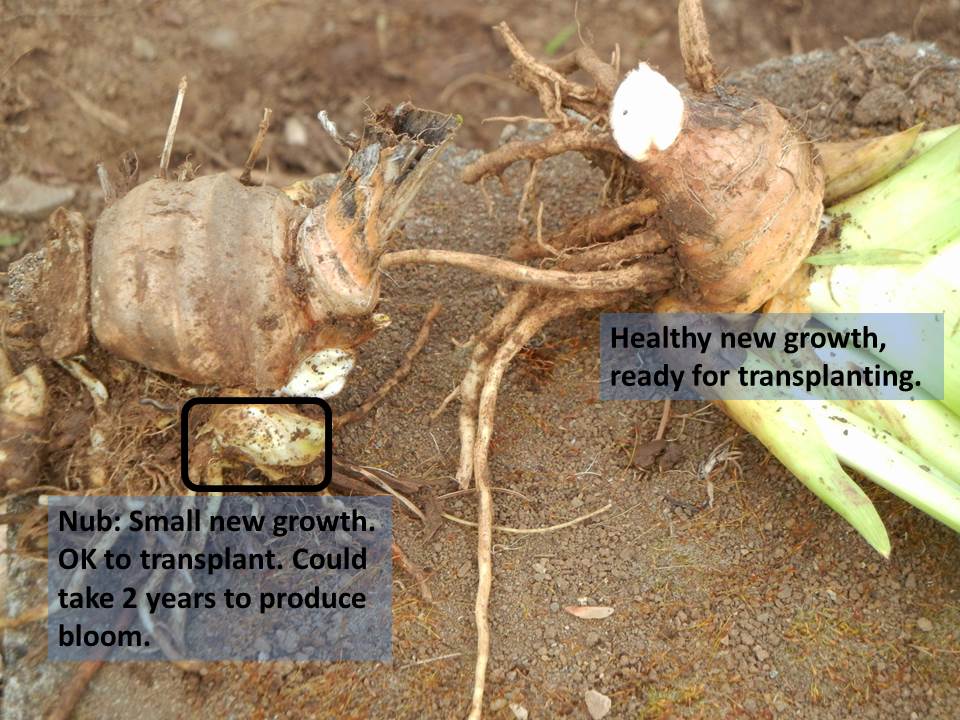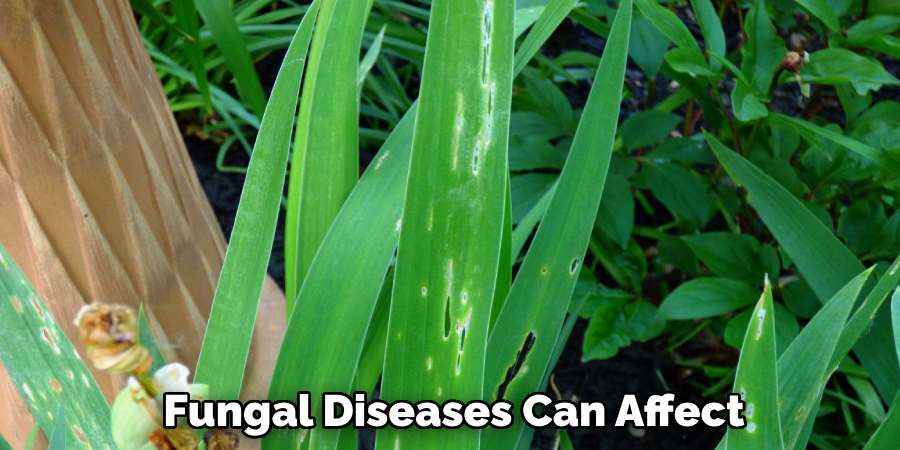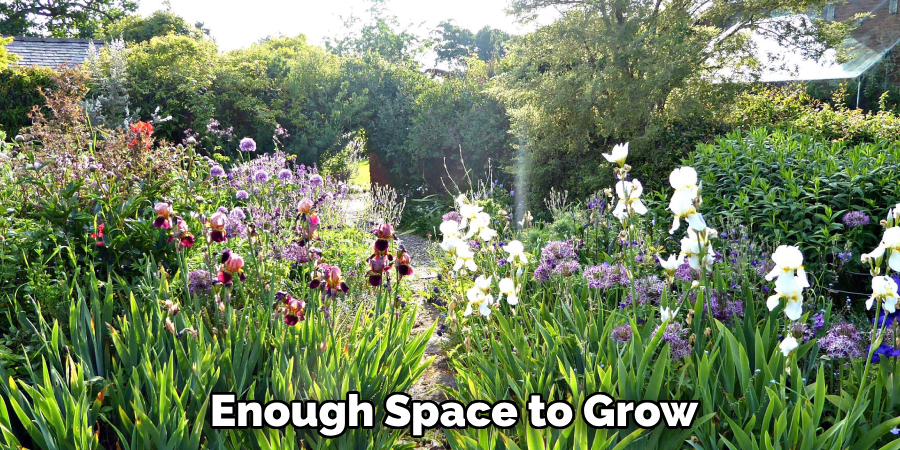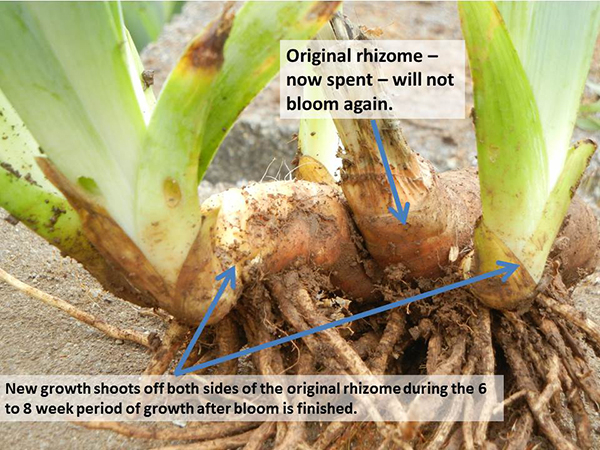To thin Iris beds, start by lifting the Iris clumps in early spring, separating the rhizomes, and replanting them at a proper spacing of 12-24 inches apart. Are your Iris beds growing overcrowded?
If so, it is essential to thin them out to maintain optimal health and vigor. Thinning Iris beds ensures enough space for each plant to receive ample sunlight, nutrients, and airflow, promoting better growth and blooms. We will walk you through a simple and effective method to thin out your Iris beds, allowing you to enjoy healthy and vibrant plants year after year.
With the right technique and timing, you can easily rejuvenate your Iris beds and enhance their overall beauty. So, let’s get started and learn how to thin Iris beds to create a stunning display in your garden.

Credit: schreinersirisgardens.wordpress.com
Why Thin Iris Beds?
Benefits of thinning for increased blooms and vigour
Thinning iris beds is crucial for maintaining their health and promoting optimal growth. By removing excess plants, you create more space and resources for the remaining irises to thrive. Thinning helps prevent overcrowding, which can lead to competition for nutrients and increased susceptibility to diseases.
Thinning also promotes increased blooms and vigour. With more space and resources available, the irises can produce larger and more vibrant flowers. Thinned beds allow for better air circulation and sunlight penetration, promoting healthier growth and minimizing the risk of fungal infections.
When To Thin Iris Beds
Thinning iris beds is an important task to maintain the health and beauty of these vibrant flowers. One of the key aspects to consider is knowing when to thin iris beds. Paying attention to signs that indicate the need for thinning is crucial. Look out for overcrowding, where the plants are tightly packed and struggling to receive adequate sunlight and nutrients. Additionally, if the iris beds have become overgrown, with rhizomes clumped together, it’s a clear indication that thinning is necessary.
The best time of year to thin iris beds is in late summer or early fall when the plants have finished blooming. This allows them to establish their roots before the winter season. Thinning during this time also provides ample time for the plants to recover and prepare for the next growing season.
Thinning iris beds not only improves the overall appearance of the garden but also promotes better growth and blooming. By following these guidelines, you can ensure that your iris beds thrive and provide a stunning display year after year.
Step-by-step Guide To Thinning Iris Beds
To ensure healthy growth and vibrant blooms, it’s essential to thin iris beds periodically. Overcrowding can lead to lackluster flowers and increased susceptibility to disease. Here’s a simple guide to help you thin your iris beds effectively:
- Inspect the bed during late summer or early fall
- Look for tightly packed rhizomes, reduced flowering, and declining overall health
- Remove any smaller, weaker rhizomes that struggle to produce foliage
- Gather a garden fork, sharp knife, pruners, and a bucket of water
- Ensure the tools are clean and sanitized to prevent the spread of diseases
- Carefully dig around the clump, ensuring you don’t damage the rhizomes
- Lift the clump from the ground and gently separate the rhizomes
- Trim away any damaged or diseased sections
- Place the divided rhizomes in the bucket of water to prevent drying out
- Choose a well-draining location with full sun for re-planting
- Space the rhizomes about 12-18 inches apart
- Dig a shallow hole, ensuring the top of the rhizome is exposed
- Place the rhizome in the hole and lightly cover with soil
- Water thoroughly and add a layer of mulch to retain moisture
Maintaining Iris Beds After Thinning
After thinning your iris beds, it is essential to provide adequate nutrients and water to the newly divided iris plants. This will help them establish strong roots and promote healthy growth. Consider adding a slow-release fertilizer rich in nitrogen, phosphorus, and potassium to the soil around the plants. Watering regularly, but avoiding overwatering, is crucial during this period.

Mulching plays a vital role in iris bed maintenance. Apply a layer of organic mulch, such as shredded leaves or straw, around the plants. This will help retain moisture, suppress weed growth, and protect the plants’ roots from extreme temperatures.
Post-thinning, it is important to closely monitor the iris beds for any signs of pests and diseases. Inspect the plants regularly for aphids, iris borers, and leaf spot diseases. Promptly address any issues to prevent further damage.
| Important Guidelines: | Avoid overwatering | Apply slow-release fertilizer | Use organic mulch | Monitor for pests and diseases |
Troubleshooting Common Issues
Thinning iris beds can be a necessary task to maintain healthy and vibrant plants. Troubleshooting common issues is an essential step in ensuring the success of your iris beds. One common problem is root rot, which can be caused by overwatering or poor drainage. To address this issue, make sure the soil is well-drained and avoid overwatering. Additionally, fungal diseases can affect iris plants, causing yellowing or browning of leaves. To combat fungal diseases, ensure proper air circulation around the plants and apply a fungicide if necessary.

Another common problem faced by iris beds is iris borer infestation. These pests can damage the rhizomes and leaves of iris plants. To deal with iris borer infestations, inspect the plants regularly for signs of infestation, such as holes and discoloration. Remove and destroy affected plant parts to prevent the spread of infestation. Finally, weak or damaged iris plants may need revitalization. Divide overcrowded clumps to promote better growth and trim back damaged leaves to encourage new growth.
Tips For Successful Thinning
When thinning iris beds, it is important to select the healthiest rhizomes for division. Look for rhizomes that are plump, firm, and free from signs of disease or rot. Remove any old or diseased rhizomes to prevent the spread of disease within the bed.
Creating a balanced and visually appealing iris bed is also key. Consider the colors, heights, and bloom times of the iris varieties in your bed. Aim for a mix of tall and short varieties, as well as a variety of colors and bloom times. This will ensure that your iris bed remains visually interesting throughout the growing season.
Frequently Asked Questions Of How To Thin Iris Beds
Can I Thin Iris Beds In The Fall?
Yes, fall is the ideal time to thin iris beds. This allows the plants to establish their roots before winter and promotes healthier growth in the spring.
How Do I Know If My Iris Beds Need Thinning?
You can tell if your iris beds need thinning when the plants become overcrowded, resulting in reduced blooms and increased disease susceptibility. Look for signs of rhizomes clumping together or plants producing fewer flowers.
What Is The Best Way To Thin Iris Beds?
To thin iris beds, carefully dig up clumps of rhizomes and separate them. Trim off any damaged or dead sections, leaving only a healthy rhizome with roots. Replant the rhizomes in well-prepared soil at the appropriate spacing.
How Often Should I Thin My Iris Beds?
Iris beds should be thinned every 3 to 4 years to maintain their health and vigor. This prevents overcrowding and allows the plants to have enough space to grow and bloom effectively.

Conclusion
Thinning iris beds is a crucial task for maintaining healthy and vibrant plants. By following the steps discussed in this post, you can ensure the optimal growth and blooming of your iris bed. Regularly dividing and replanting overcrowded iris clumps and removing excessive foliage will promote better air circulation, reduce the risk of diseases, and enhance the overall aesthetic appeal of your garden.
Take the time to thin your iris beds and enjoy the beautiful blooms they will reward you with.

